5 Insect Cuticle
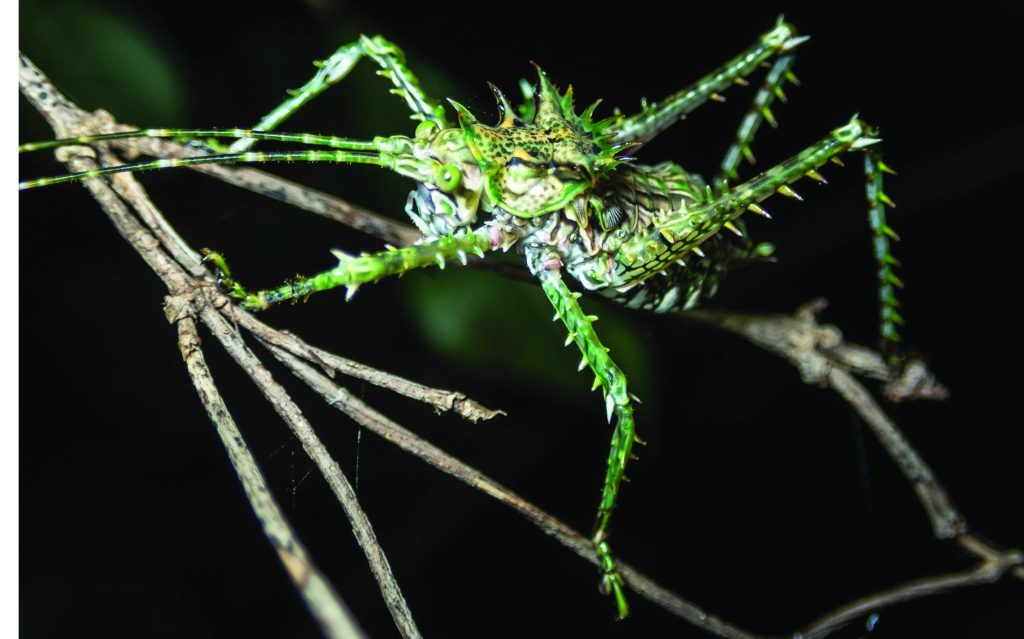
The possession of a cuticular exoskeleton has a major impact on all aspects of insect biology. We take a closer look at the structure of cuticle and explore ways in which cuticle is modified to provide colours, camouflage, jumping ability and outright strength. Insects breathe by taking air into the body through internal tubes that are lined with cuticle.
THRD0023 015 (YouTube, 3m 05s):
Learning Objectives
- Describe the structure and function of the insect integument
- Describe the types and functions of variations in cuticle composition and form
- Know the structure and function of trachea
Structure of the cuticle
The exoskeleton of insects is usually called the cuticle. The integument is a collective term that incorporates the single layer of cells below the cuticle called the epidermis plus the cuticle (cuticle + epidermis = integument).The cells of the epidermis secrete the cuticle.
THRD0023 016 (YouTube, 5m 35s):
The cuticle has different zones (from the outside to the epidermis) which vary in chemistry and function. The procuticle may be differentiated into an endo- and an exocuticle. Procuticle is overlaid by an epicuticle. Dermal glands and wax filaments extend upwards through the cuticle.
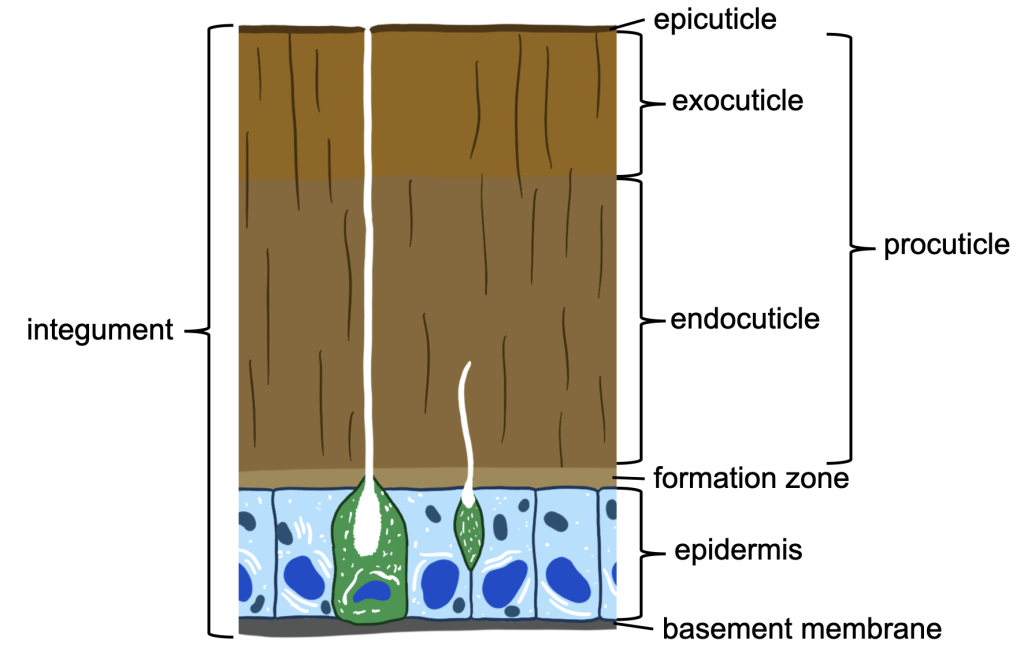
The cuticle itself is made up of chitin microfibrils. Chitin is an unbranched amino-sugar polysaccharide. The chitin molecules form long fibrils which are embedded in and linked by a protein matrix.
The most common arrangement of the microfibrils is for them to be parallel to one another in sheets, with each sheet differing slightly in its orientation from the previous. This arrangement provides strength and retards fracturing.
Functions of the cuticle/exoskeleton
The cuticle has a number of general functions. It can:
- provide a tough protective covering
- provide flexibility where needed
- reduce water loss through the presence of a waxy layer
- provide antibiotic properties and a barrier to invasion by microorganisms
- provide a rigid skeleton for attachment of muscles
- act as ‘tools’ for processes such as cutting (mandibles), grasping (claws), sticking to surfaces (pads at the tips of the tarsi), piercing (mouthparts), embedding (hooks on mouthparts).
- allow perception of the environment through the sensory system that transmits signals through the cuticle or through minute pores in the cuticle (the taste receptors)
- provide insulation through production of scales or hairs such as the many hairs seen on a bee.
- provide colour through surface sculpting such as the finely detailed architecture of the scales of iridescent butterfly scales
Internalised cuticle
Parts of the gut, the internal respiratory system and the internal reproductive system are lined with cuticle. This cuticle is usually thin and unsclerotised. The structure of the gut is covered in another section.
Modifications of Cuticle
Insect cuticle provides a model for artificial materials in an area of research called biomimetics. Biomimetic materials are artificial products that mimic the attributes of natural products, from plants or animals including types of insect cuticle. Some examples include:
- making flexible cuticle in the laboratory by first producing artificial versions of cuticle proteins and then cross-linking them to make a rubber-like material
- copying the structure of cuticular surface sculpting that produces the brilliant “interference” colours
- copying the cuticular structure of individual hairs that make up the “foot pads” (pulvilli) between the tarsal claws that allows flies to walk on the ceiling.
Keen to learn more?
Sclerotisation
Tanning, or sclerotisation as it is called, is an irreversible process involving proteins that darkens the cuticle. Protein chains become linked by phenolic bridges (quinone tanning). Water is excluded and the cuticle dries. The proteins in the cuticle become water-insoluble. Only exocuticle becomes sclerotised. The dark cuticle of an adult jewel beetle (Coleoptera) probably contains melanin whereas the lighter larval cuticle would not.
The black pigment, melanin, is often formed during sclerotisation. It is made from excess dopamine involved in the chemical process. Melanin, as well as contributing to sclerotisation and blackening of the cuticle, is useful in photon shielding (UV light protection) and as an antibiotic for insects.
Unsclerotised or poorly sclerotised cuticle is found in some larval insects and in intersegmental regions in adults where it can allow for bending and stretching. This is seen, for example, in honey pot ants (Hymenoptera) (Watch this David Attenborough video of honeypot ants in Australia!); scale insects (Hemiptera); abdomens of mosquitoes (Diptera) and other blood feeders; and in grub-like larvae that feed on plants.
Soft cuticle has about 50% each of chitin and protein where as stiffer cuticles have about 30% chitin and 70% protein.
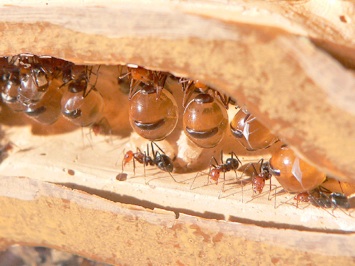
Additives for Strength and Flexibility
Cuticle forms the anchor points for muscles. Cuticle can also be hardened and stiffened to perform specific functions such as the hardening of mandibles, claw tips and drilling ovipositors. Metals such as zinc, manganese and sometimes, iron can be incorporated into these specialised areas of cuticle. The transition metals always co-occur with halogens such as chlorine or bromine. It is thought that these metals and halogens are incorporated into proteins that help make the cuticle especially hard. For example, some termites with zinc in their mandibles have cutting edges 20% harder than termites without the metals. Leafcutter ants incorporate zinc into their mandibles and only start cutting leaves when the full complement of metal has been reached.
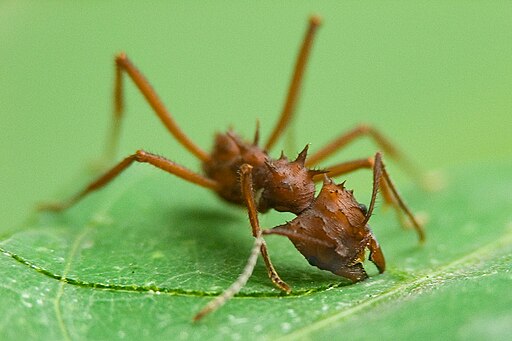
Insects also show true mineralization of the cuticle. Muscid flies (Musca domestica and Musca autumnalis) have a pupal case armoured with calcium. This appears to reduce parasitism presumably because wasps cannot easily drill through the outer casing to lay eggs within. Calcium has also been found in the cutting edges of some parasitic wasp ovipositors, as crystals of calcium carbonate in the body cuticle of some beetles and as amorphous calcium phosphate in the cuticle of the soil-burrowing predatory larvae of the primitive fly, Exeretonevra angustifrons. These are examples of true mineralization, similar in nature to the crab carapace.
The elastic cuticle protein, resilin
One form of insect cuticle is made up entirely of a protein called resilin. Resilin protein is highly hydrated which means it contains water. It has been isolated and manufactured in the laboratory and is the most efficient elastic protein known to mankind.
Resilin is found in and associated with joints and tendons of insects and in specialised patches that undergo repeated compression and stretching; it is the equivalent of an insect spring. The material can be bent and stretched for the life of the insect without wearing out. Because it shows a bright blue fluorescence under UV light it is easy to find. Patches are seen under the wings of dragonflies and in the legs of fleas and leafhoppers.
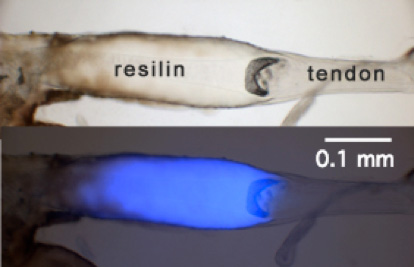
Colours and Camouflage
THRD0023 017 (YouTube, 3m 54s):
The cuticle of insects is often brown or black but can be a range of colours as seen in butterflies, moths, lady beetles and the reds and golds of some jewel beetles. Colour is achieved through a number of mechanisms. Light waves can interfere with one another as they bounce off cuticle that has a grating or fine striation. Such colours are called interference colours and produce iridescence and ultraviolet colours. Butterfly and moth scales have such patterns.
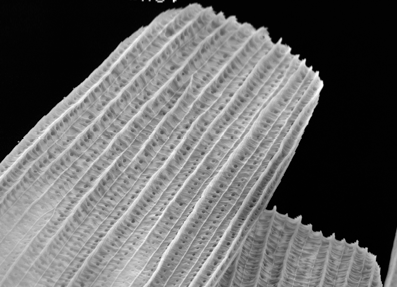
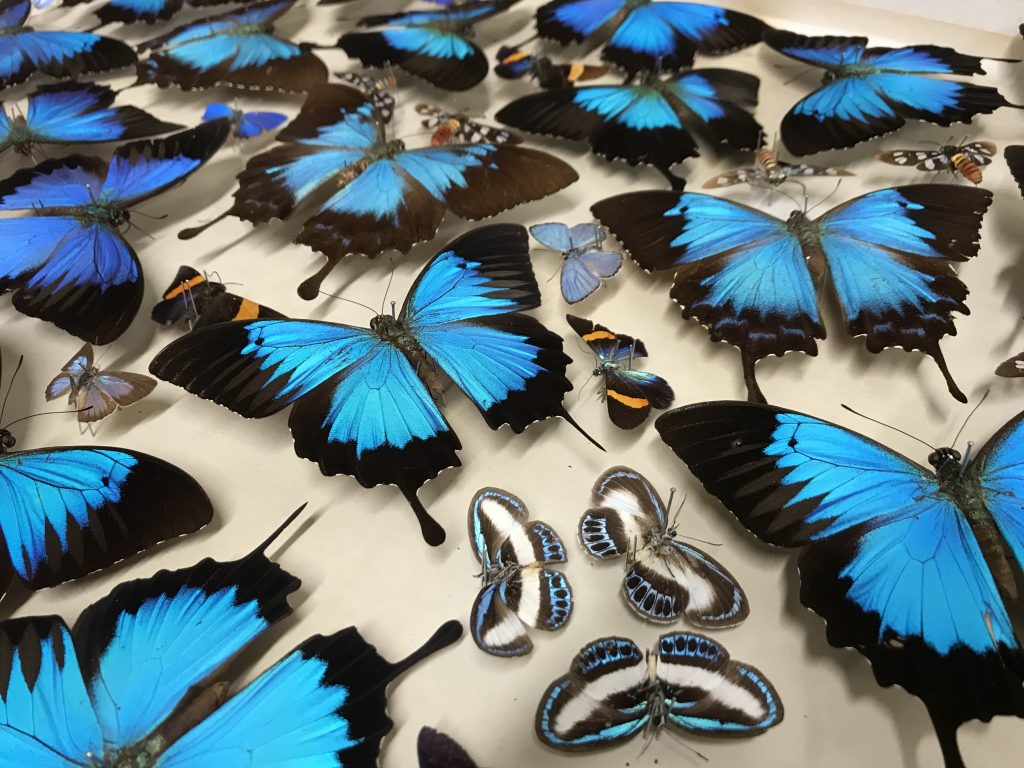
Colours can also be produced by light scattering that relies on the degree of cuticular roughness relative to the wavelength of impinging light. Whites are produced by structures larger than the wavelength of light whereas blues require irregularities that reflect only short wavelengths.
Another mechanism for producing colour is pigment-based. Chemicals with colour can be found in secretions onto the cuticle, within the cuticle, or in the epidermal cells or fat body. A range of chemicals are involved: carotenoids and flavonoids can produce yellows, tetrapyrrholes provide reds, blues and greens, melanins produce blacks.
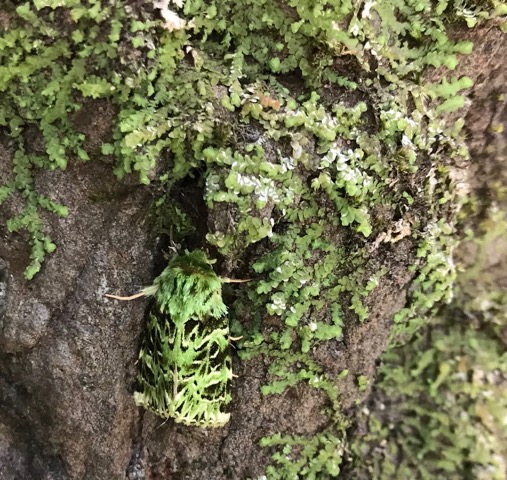
Respiratory System (The Internal Cuticle)
All insects must exchange gases with the environment, obtaining oxygen and releasing carbon dioxide. The insects’ respiratory system is not based on lungs but on passage of air through cuticle-lined tubes. At the finest branches of this tubular system the cells harvest the oxygen. The respiratory system of insects is a discrete system known as the tracheal system. The trachea are cuticle-lined tubes that ramify within the insects body, carrying oxygen and carbon dioxide inside the tubes. They link to the atmosphere via spiracles.
THRD0023 00 (YouTube, 5m 30s):
Body movements help flush air through the tubular system (convective ventilation); however, passive diffusion over a concentration gradient is the mechanism for removing CO2 and supplying O2 near the cells.
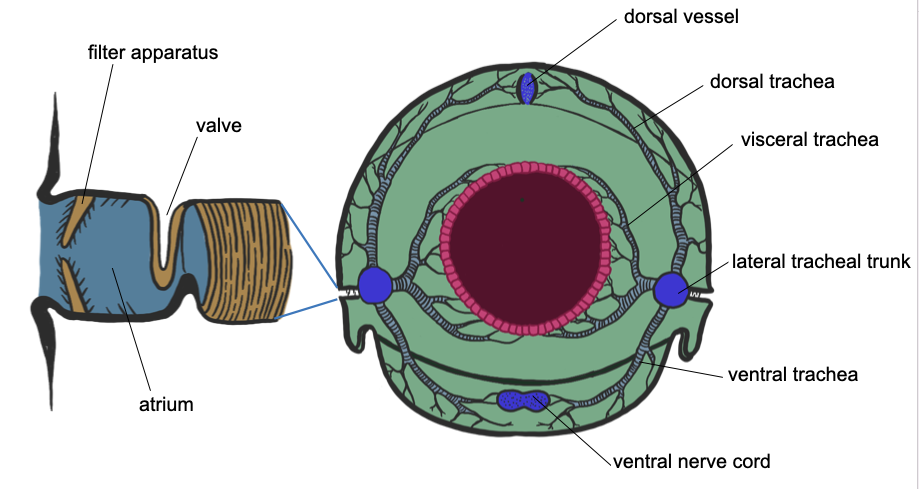
The trachea open through ports in the exoskeleton called spiracles. Spiracles of some insects are able to be opened and closed to allow water conservation and to create a directional flow through the tracheal system. Some spiracles may be surrounded by cuticular modifications such as valves and they sometimes have an atrium just inside the opening.
The longitudinal tracheal trunks are the main components of the ventilation system, connecting each segment and sending off branches into the tissues and organs of each segment.
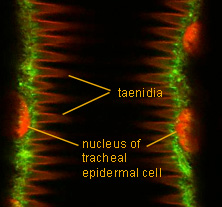
Spiracles are the holes in the body wall that allow gaseous exchange with the external environment. Primitively, each main thoracic and abdominal segment has a pair of spiracles but this plan is modified in more derived groups; many insects have fewer than ten spiracles. Spiracles are rarely as simple in structure as a pore or hole. They may have opening and closing mechanisms and may have complex structures that prevent entry of dust and tiny mites. Spiracles allow for gaseous exchange but can also allow water loss or the opposite, drowning. Survival strategies on land involve regulation of opening to the minimum time needed for oxygen exchange. To see how aquatic insects deal with respiration, go to Chapter 11.
While trachea are the main air tubes, the tracheoles are fine branches of trachea that spread into contact with individual cells.
Taenidia are spiral ridges or thickenings of cuticular lining of tracheae. They provide flexibility and resist collapse, similar to the function of the rings in a vacuum cleaner hose.
Air sacs are dilations of trachea that have a whitish appearance within the body cavity. They are most developed in the most active insects, e.g. fast fliers, where muscle activity compresses and expands the sacs, leading to active ventilation
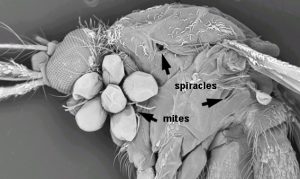
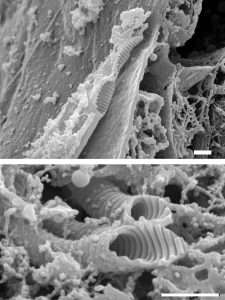
Activities
Activity 5.1
What are the advantages of being able to seal off the tracheal system from the outside environment?
Activity 5.2
Look up the meaning of apneustic in reference to some insect respiratory systems. What characteristics of the cuticle would apneustic insects have?
Activity 5.3
The table below lists terms for standard insect spiracle patterns. Look up the meaning of each one, make a note of the pattern it describes and give an example insect with that pattern.
| Spiracle pattern | Thoracic spiracles | Abdominal spiracles | example insect with this pattern |
|---|---|---|---|
| polypneustic | |||
| holopneustic | |||
| hemipneustic | |||
| amphipneustic | |||
| propneustic | |||
| peripneustic |
Activity 5.4
Watch Next Level Camouflage (YouTube, 1m 04s) showing an extreme form of insect camouflage: a Lichen Katydid (Markia hystrix, Family: Tettigoniidae), from Costa Rica.
Topic Review
Do you know…?
- the effect of protein additives on cuticle mechanical attributes
- the function of the trachea
- the difference between a trachea, a tracheole and a spiracle
- Can you draw a diagram of the integument, naming the main types of cuticle?

